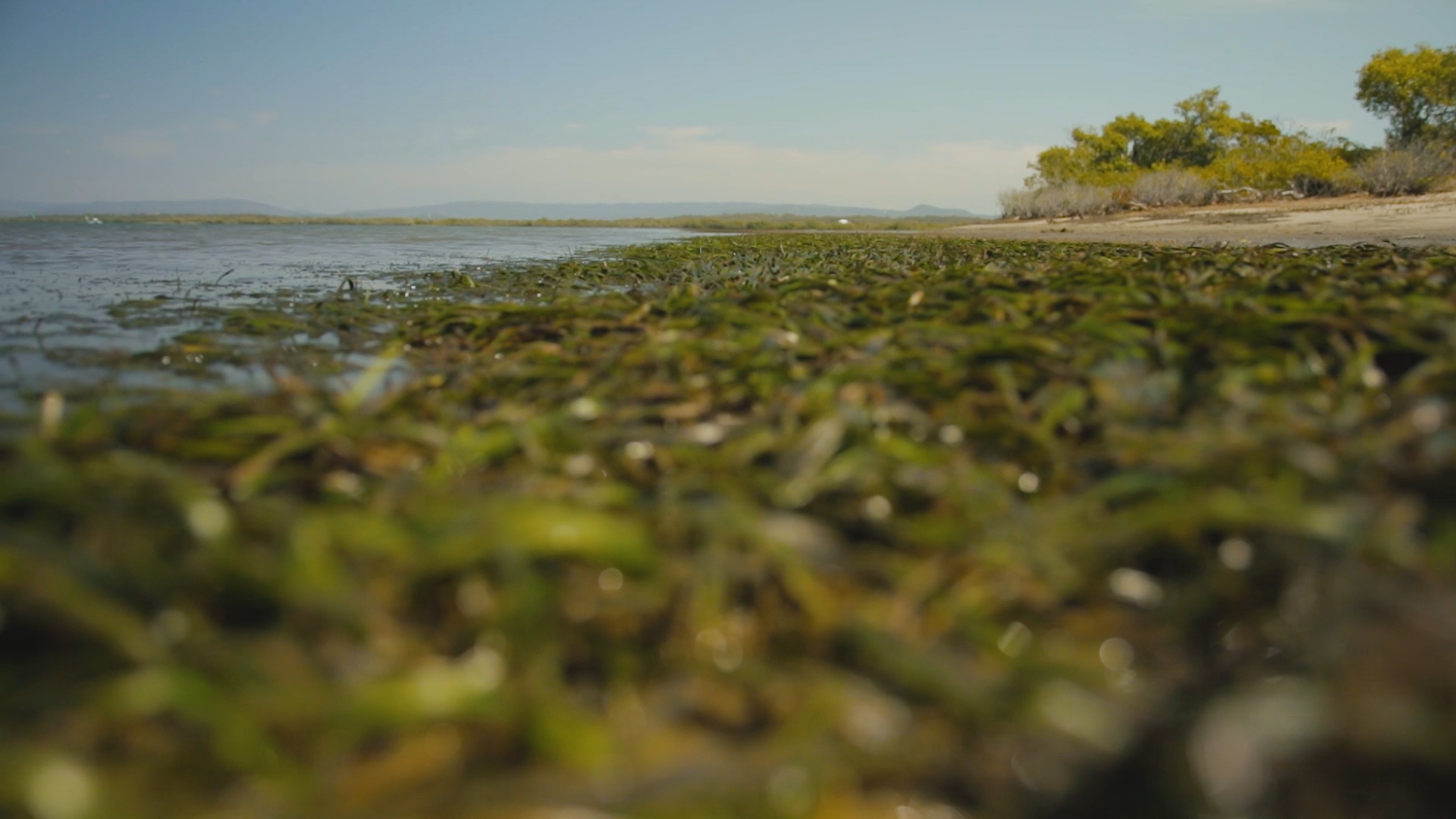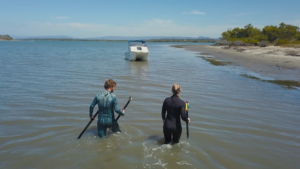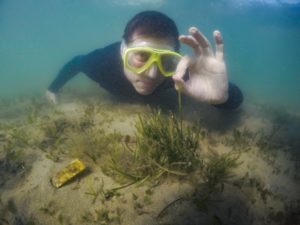
A landmark study into the light sensitivity of Gold Coast seagrass meadows has pinpointed how much light these vital breeding and feeding grounds for sea life need to grow and thrive.
The study, undertaken by a Griffith University research team lead by Professor Rod Connolly on behalf of the Gold Coast Waterways Authority (GCWA), looked at the impacts of light levels on growth and survival rates of seagrass meadows.

Seagrass light sensitivity has been the subject of research on the Great Barrier Reef but hasn’t been investigated on the Gold Coast where seagrass meadows live in different environmental conditions.
The Gold Coast is home to about 1,100 hectares (about 11 square kilometres) of seagrass meadows which provide food and shelter for marine species like dugongs, turtles and seahorses, and stabilise seabeds and shorelines, reducing erosion.
GCWA Chair Mara Bún said seagrass also played a vital role in responding to climate change because it is able to store carbon faster than land-based plants, making it an effective ‘carbon sink’.
“These green assets contribute to the overall health and natural capital value of our waterways, which has been estimated at $26 billion. They form part of our blue economy which is internationally delivering strong economic value. As a carbon sink, seagrass meadows have enormous potential to deliver economic benefits to our waterway city.
“This study has given us a better understanding of how seagrass responds to light which will help us decide what we need to do to make sure that activities which have the potential to adversely impact seagrass growth are carefully managed to ensure these meadows are protected and nurtured.

“The study has come up with a recommended minimum number of hours of light exposure needed to maintain seagrass health. Those time periods will vary depending on the location of the seagrass, direct exposure to sunlight and time of day.
“We’ll work to incorporate those recommendations into activities such as our dredging programs for example, to minimise impacts on seagrass meadows so these marine nurseries are happy and healthy.”
Ms Bún said the inclusion of light sensitivity thresholds added to other measures GCWA was undertaking to improve seagrass protection, including undertaking seagrass surveying and mapping prior to dredging programs commencing and regular water quality monitoring during dredging campaigns.
Griffith University project lead, Professor Connolly, said the research team assessed a range of data points including solar strength, cloud cover, wind speed and direction, boating traffic in areas being studied, water depth, distance from ocean inlets and time of day.
“Over 9 months of field experiments we took millions of underwater light measurements, which scientifically support the new management recommendations.”







